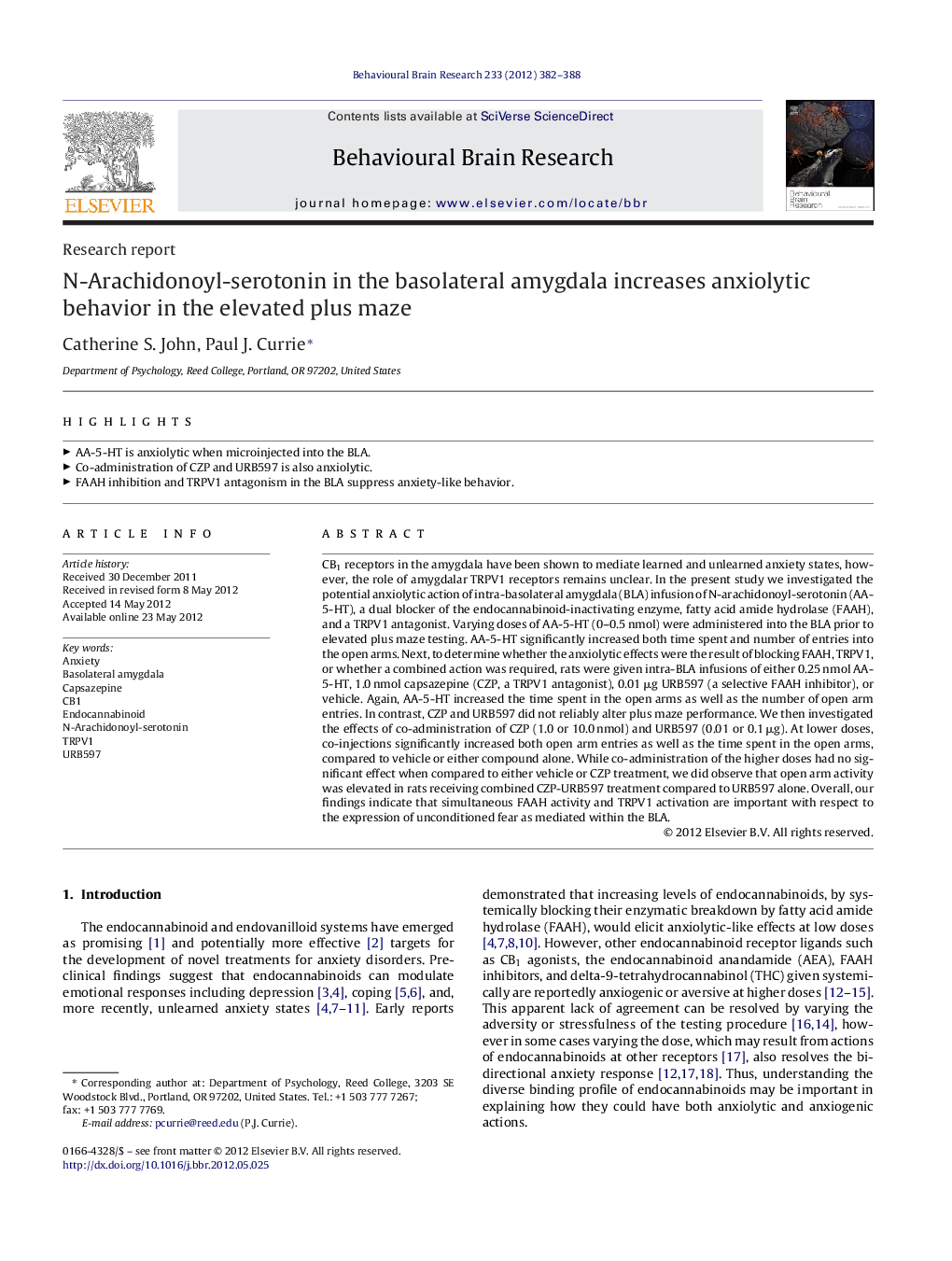| Article ID | Journal | Published Year | Pages | File Type |
|---|---|---|---|---|
| 4313145 | Behavioural Brain Research | 2012 | 7 Pages |
CB1 receptors in the amygdala have been shown to mediate learned and unlearned anxiety states, however, the role of amygdalar TRPV1 receptors remains unclear. In the present study we investigated the potential anxiolytic action of intra-basolateral amygdala (BLA) infusion of N-arachidonoyl-serotonin (AA-5-HT), a dual blocker of the endocannabinoid-inactivating enzyme, fatty acid amide hydrolase (FAAH), and a TRPV1 antagonist. Varying doses of AA-5-HT (0–0.5 nmol) were administered into the BLA prior to elevated plus maze testing. AA-5-HT significantly increased both time spent and number of entries into the open arms. Next, to determine whether the anxiolytic effects were the result of blocking FAAH, TRPV1, or whether a combined action was required, rats were given intra-BLA infusions of either 0.25 nmol AA-5-HT, 1.0 nmol capsazepine (CZP, a TRPV1 antagonist), 0.01 μg URB597 (a selective FAAH inhibitor), or vehicle. Again, AA-5-HT increased the time spent in the open arms as well as the number of open arm entries. In contrast, CZP and URB597 did not reliably alter plus maze performance. We then investigated the effects of co-administration of CZP (1.0 or 10.0 nmol) and URB597 (0.01 or 0.1 μg). At lower doses, co-injections significantly increased both open arm entries as well as the time spent in the open arms, compared to vehicle or either compound alone. While co-administration of the higher doses had no significant effect when compared to either vehicle or CZP treatment, we did observe that open arm activity was elevated in rats receiving combined CZP-URB597 treatment compared to URB597 alone. Overall, our findings indicate that simultaneous FAAH activity and TRPV1 activation are important with respect to the expression of unconditioned fear as mediated within the BLA.
► AA-5-HT is anxiolytic when microinjected into the BLA. ► Co-administration of CZP and URB597 is also anxiolytic. ► FAAH inhibition and TRPV1 antagonism in the BLA suppress anxiety-like behavior.
